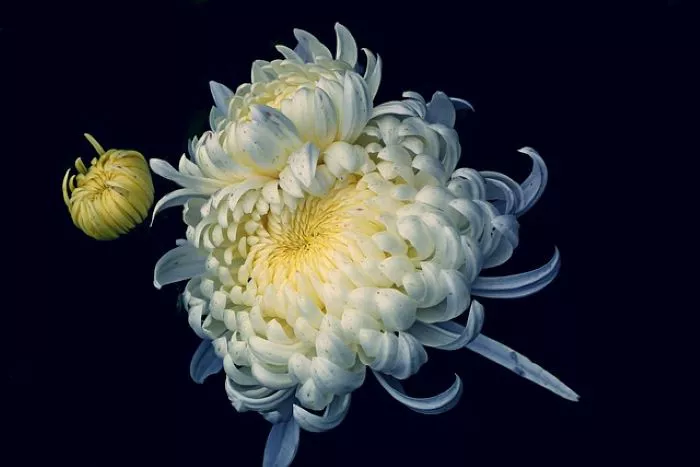Daisy flowers are a popular choice for home gardens due to their cheerful appearance and ease of care. Known for their simple yet striking blooms, daisies come in various species and colors. Growing daisies at home can enhance your garden’s beauty and provide a vibrant display from spring to fall. This article offers a comprehensive guide on how to grow daisies successfully at home.
Understanding Daisies
Daisies belong to the Asteraceae family, which includes many well-known flowers. The most common type is the Shasta daisy, characterized by its white petals and yellow center. Other varieties include the Gerbera daisy and the African daisy, each offering unique colors and shapes. Daisies are perennial plants, meaning they can return year after year if cared for properly.
Choosing the Right Location
Selecting the right location is crucial for growing daisies. Daisies thrive in full sun, requiring at least six hours of direct sunlight each day. A well-drained area is essential to prevent waterlogging, which can lead to root rot. If your garden soil is heavy clay, consider amending it with organic matter to improve drainage.
Preparing the Soil
Daisies prefer slightly acidic to neutral soil with a pH between 6.0 and 7.0. Before planting, prepare the soil by following these steps:
Clear the Area: Remove any weeds, rocks, or debris from the planting site. This will reduce competition for nutrients and water.
Loosen the Soil: Use a garden fork or tiller to loosen the soil to a depth of about 12 inches. This helps roots penetrate easily.
Add Organic Matter: Incorporate compost or well-rotted manure into the soil. This will improve soil fertility and structure, promoting healthy growth.
Choosing Daisy Varieties
When selecting daisies, consider the varieties that best suit your garden’s conditions and aesthetic preferences. Here are a few popular options:
Shasta Daisy: A classic choice with white petals and a bright yellow center. They are hardy and bloom from late spring to early fall.
Gerbera Daisy: Known for their large, colorful blooms, Gerbera daisies are often used in floral arrangements. They prefer slightly more care than other varieties.
African Daisy: These daisies are known for their vibrant colors and are ideal for warmer climates. They bloom in late spring and summer.
Planting Daisies
Once you have chosen your daisy variety and prepared the soil, it is time to plant.
Timing: The best time to plant daisies is in the spring after the last frost. This allows them to establish roots before the heat of summer.
Spacing: Plant daisies about 12 to 18 inches apart to allow for their growth. This spacing promotes good air circulation and reduces the risk of disease.
Planting Depth: Dig a hole that is slightly larger than the root ball of the daisy. Place the plant in the hole, ensuring that the crown is level with the soil surface. Fill in around the roots with soil and gently firm it down.
Watering and Care
Proper watering and care are essential for healthy daisies.
Watering: Daisies prefer moderate moisture. Water them deeply once a week, allowing the top inch of soil to dry out between waterings. Avoid overhead watering to minimize the risk of fungal diseases.
Fertilizing: Daisies do not require heavy fertilization. A balanced, slow-release fertilizer applied in early spring will provide the necessary nutrients. Avoid over-fertilizing, as this can lead to excessive foliage growth with fewer blooms.
Mulching: Apply a layer of organic mulch around the base of the plants. This helps retain moisture, suppress weeds, and maintain a consistent soil temperature.
Pruning and Deadheading
To encourage continuous blooming and maintain the health of your daisies, regular pruning is essential.
Deadheading: Remove spent flowers by cutting them off at the base of the stem. This encourages the plant to produce more blooms and prevents it from going to seed.
Pruning: In late fall, cut back the foliage to about 4 to 6 inches above the ground. This helps prevent disease and prepares the plant for winter dormancy.
Pest and Disease Management
Daisies are generally resistant to pests and diseases, but they can still be affected by some issues.
Common Pests: Watch for aphids, slugs, and spider mites. If you notice these pests, treat them with insecticidal soap or neem oil.
Diseases: Daisies can be susceptible to powdery mildew and root rot. Ensure good air circulation and avoid overcrowding to minimize these risks. If powdery mildew appears, remove affected leaves and apply a fungicide if necessary.
Harvesting and Enjoying Daisies
Once your daisies bloom, you can enjoy their beauty both in the garden and indoors.
Cutting Flowers: To create floral arrangements, cut the stems in the morning when the flowers are fully open. Use sharp scissors or pruning shears to make a clean cut.
Arranging: Daisies can be combined with other flowers for vibrant bouquets. They also look lovely in simple arrangements on their own.
Conclusion
Growing daisies at home is a rewarding endeavor that adds beauty and charm to any garden. With proper care, these cheerful flowers will thrive and provide vibrant blooms throughout the growing season. By following the steps outlined in this guide, you can successfully cultivate daisies and enjoy their delightful presence in your home. Whether planted in garden beds or containers, daisies are sure to brighten your space and bring joy to your gardening experience.


